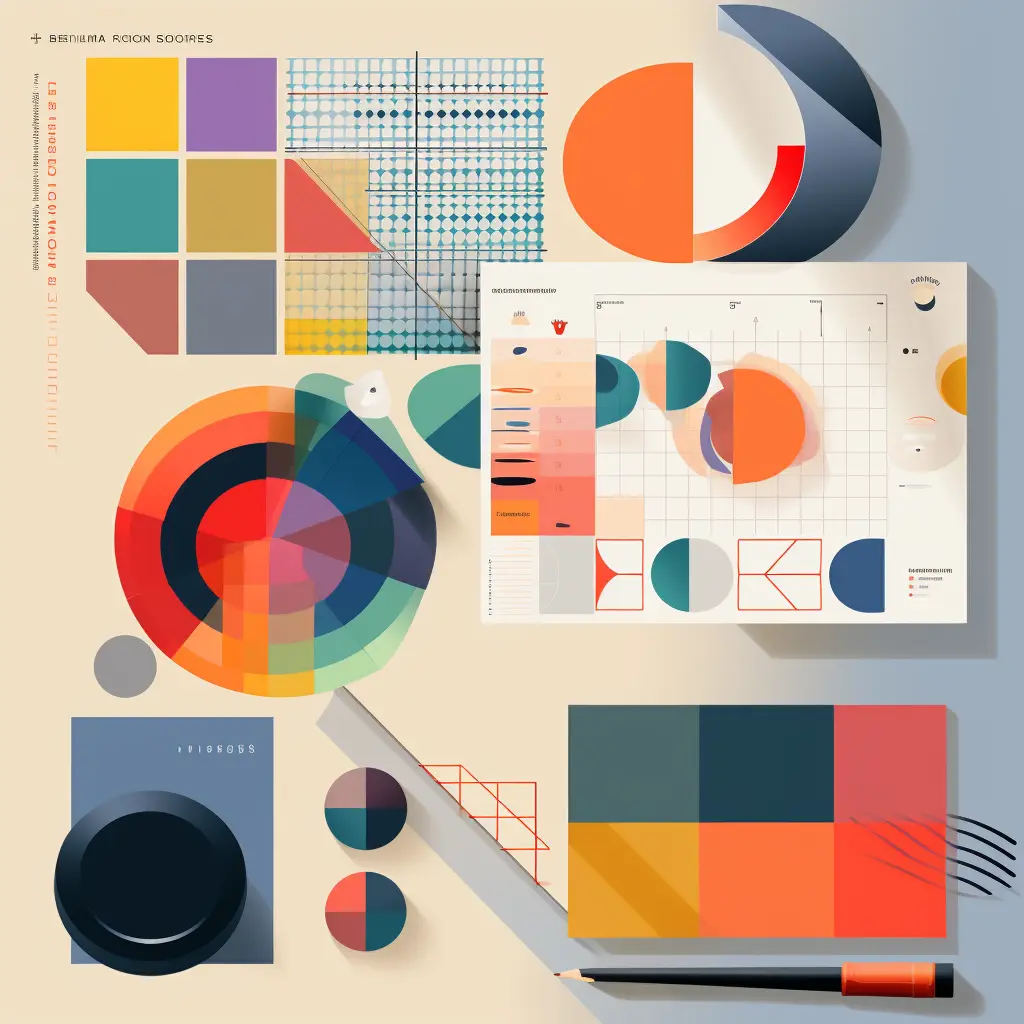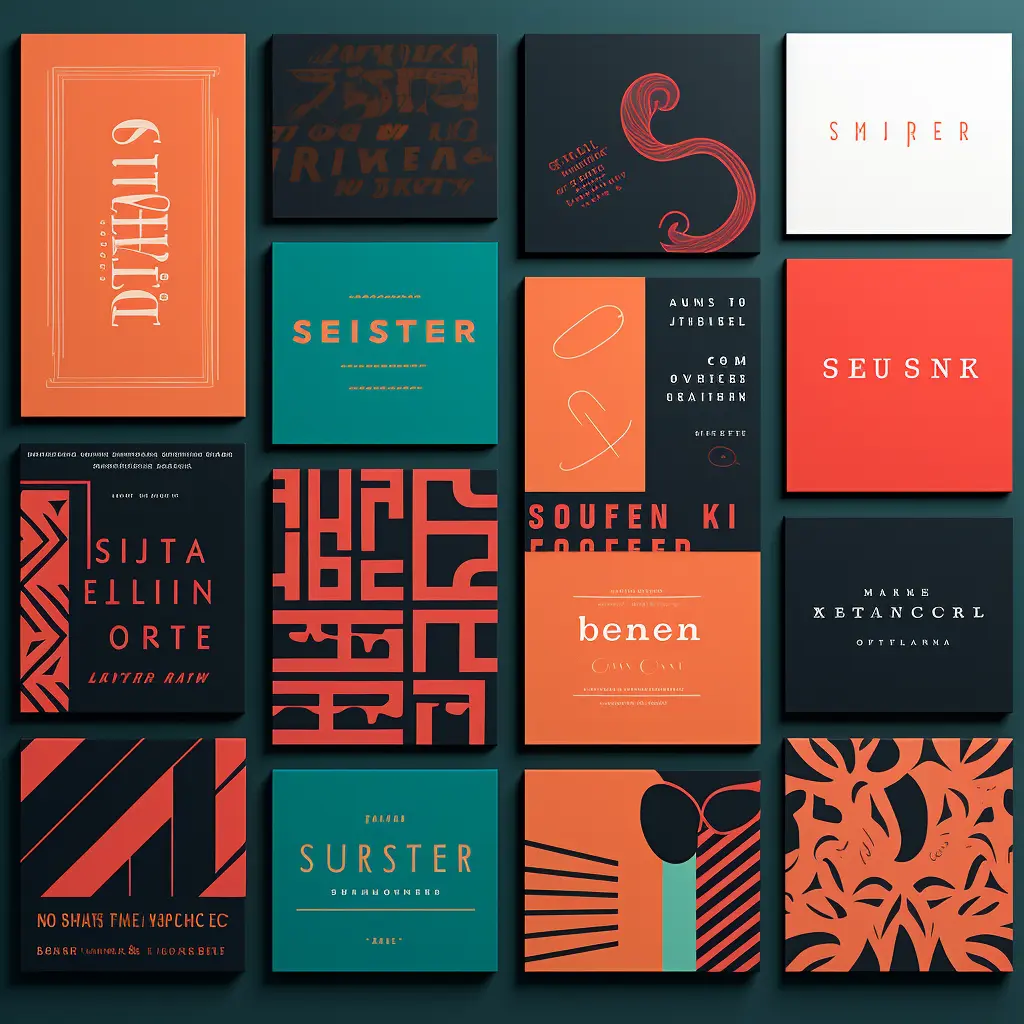Graphic design is an art form that plays a pivotal role in today’s business landscape. It’s not just about creating visually appealing images; it’s about conveying messages, building brands, and leaving a lasting impact on your audience. In this article, we will explore the power of graphic design, its significance, and its diverse applications across various industries.

The Importance of Graphic Design
Graphic design is a crucial element in modern marketing and branding strategies. It plays a pivotal role in conveying your brand’s message, attracting and retaining customers, and creating a lasting impression. At WeCreate, a digital marketing agency in Hong Kong, we understand the significance of graphic design in the success of your business.
Let’s delve into the key aspects of graphic design and why it should be an integral part of your branding and marketing efforts.
Graphic Design Meaning
Graphic design meaning: the art and practice of creating visual content that communicates a message or idea. It involves combining typography, imagery, color, and layout to produce designs that can be used in various mediums, such as print materials, websites, social media, and more.
The Role of Graphic Design in Branding
Your brand’s visual identity is often the first point of contact with potential customers. Here’s how graphic design contributes to effective branding:
| Role | Description |
|---|---|
| Brand Recognition | Consistent use of logos, colors, and design elements helps customers recognize and remember your brand. |
| Conveying Brand Values | Graphic design can convey the values and personality of your brand through imagery and visual cues. |
| Creating a Unique Identity | Unique and creative designs set your brand apart from competitors, making it memorable and distinctive. |
| Building Trust | Professional and well-designed materials instill trust in your audience, showing your commitment to quality. |
The Impact of Graphic Design in Marketing
Graphic design is a powerful tool to engage and convert customers. Here are some ways it influences your marketing efforts:
- Eye-Catching Content: Visually appealing content, such as social media posts and email campaigns, grabs the audience’s attention and encourages them to explore further.
- Storytelling: Graphic design can tell a story through visuals, making your marketing materials more compelling and relatable.
- Information Clarity: Infographics and well-designed visuals make it easier for customers to understand complex information quickly.
- Consistency: Consistent design across various marketing channels reinforces your brand message and helps build trust.
Leveraging Graphic Design at WeCreate
At WeCreate, we offer a wide range of graphic design services to help you achieve your branding and marketing goals. Our services under the branding category include:
- Brand Strategy
- Logo Design
- Brand Identity Design
- Packaging Design
- Corporate Gifts
- Digital Marketing
- Email Marketing Campaigns
- Video Productions
Our design experts use their creativity and expertise to create stunning visuals that resonate with your target audience. Whether you need a new logo, a captivating video, or a complete brand identity makeover, we have you covered.
Remember that the visual elements associated with your brand can leave a lasting impression on your customers. To see how we can assist you in harnessing the power of graphic design, visit our Branding Agency Hong Kong page.
The Significance of Graphic Design in Digital Marketing

Graphic design is the visual communication tool that bridges the gap between your brand and your target audience. Here’s why it’s crucial in the context of digital marketing:
1. Visual Storytelling
Graphic design enables you to tell a compelling visual story. Through a harmonious blend of images, typography, and colors, you can convey your brand’s narrative, making it more relatable and engaging for your audience.
2. Brand Consistency
Consistency is key in digital marketing. Graphic design ensures that your brand elements such as logos, colors, and typography remain consistent across all digital platforms, reinforcing brand recognition.
3. Capturing Attention
In the digital world, attention spans are limited. Eye-catching graphics and visuals are more likely to grab your audience’s attention and keep them engaged with your content.
4. Conveying Information
Infographics and visually appealing content make it easier to convey complex information. This is particularly important when explaining products or services.
5. Social Media Marketing

Social media is a cornerstone of digital marketing. Graphic design plays a pivotal role in creating shareable content and compelling social media posts that drive user engagement and interaction.
The Art of Color Theory
Typography plays a pivotal role in graphic design meaning, impacting the way information is communicated, the mood of a design, and the overall user experience. As a digital marketing agency offering graphic design services, WeCreate understands the significance of typography in creating visually appealing and effective designs.
Let’s delve into the world of typography, its importance, and how it influences graphic design. For more information about our graphic design services, please visit our Graphic Design page.

Importance of Typography
Typography involves the selection and arrangement of fonts, typefaces, and text within a design. Here are some key reasons why typography is crucial in graphic design:
1. Communication
Typography conveys the message of your design. It makes written content legible and engaging. Proper typeface choices can evoke emotions and convey the intended tone of the message.
2. Brand Identity
Typography plays a significant role in establishing and reinforcing your brand identity. Consistent font choices across all your branding materials help in brand recognition.
3. Visual Hierarchy
Effective typography helps establish a visual hierarchy, guiding the viewer’s eyes to the most important content. It directs the flow of information and ensures key elements are noticed.
4. Aesthetics
Typography contributes to the overall aesthetics of a design. It can transform a plain layout into a visually appealing and compelling piece of art.
Key Typography Elements
To better understand typography, it’s essential to know the key elements involved:
1. Typeface
A typeface refers to the design of a set of characters, which includes letters, numbers, and symbols. Common typefaces include Times New Roman, Arial, and Helvetica.
2. Font
A font is a specific style, size, and weight of a typeface. For instance, Arial can have various fonts like Arial Regular, Arial Bold, and Arial Italic.
3. Kerning
Kerning is the spacing between individual characters or letters. Proper kerning ensures that the text is evenly spaced, making it more readable.
4. Tracking
Tracking is the overall spacing between all characters in a block of text. It can be adjusted to enhance legibility or aesthetics.
5. Leading
Leading is the vertical space between lines of text. Proper leading ensures that lines are spaced appropriately and do not overlap.
Typography in Graphic Design
In graphic design, typography is used in various ways:
- Headlines: Eye-catching fonts are used for headlines to grab attention.
- Body Text: Readable fonts for the main content ensure the information is easily consumed.
- Decorative Fonts: These fonts add artistic and decorative elements to the design.
- Emphasis: Typography can be used to highlight or emphasize specific words or phrases.
- Color: Text color choices also play a significant role in design. Contrast between text and background is crucial for readability.
Our Approach at WeCreate
At WeCreate, our graphic design services include a meticulous approach to typography. We understand that typography is not just about choosing fonts but about creating an entire visual language. We ensure that the typography in our designs aligns with your brand identity, effectively communicates your message, and enhances the overall aesthetics.
For all your graphic design needs, get in touch with us. Our expert team is ready to assist you in creating visually stunning and effective designs that leverage the power of typography.
Remember, in graphic design, typography is not just text; it’s a visual language that can make or break the success of your design.
Composition and Layout
A well-designed composition and layout can make or break a piece of graphic design. It’s about organizing elements in a visually appealing and logical way. The right composition and layout guide the viewer’s eye and emphasize the most critical information. This involves creating a visual hierarchy where the most important elements are easily noticeable, whether it’s the headline of a magazine cover or the call-to-action button on a website. Effective use of white space, balance, and alignment plays a crucial role in achieving a harmonious layout.
Moreover, a well-structured composition also takes into account the psychology of visual perception. It considers how the human eye naturally moves across a design and uses this knowledge to lead the viewer through the content in an engaging manner. Whether it’s a print advertisement or a website, a thoughtful composition enhances user experience and helps convey the intended message with clarity and impact.
Versatility in Design
Graphic designers are versatile artists. They can work on a wide range of projects, from business cards and brochures to billboards and websites. Their adaptability ensures that every design is tailored to its specific purpose and audience. This versatility is underpinned by a deep understanding of design principles, color theory, typography, and the latest design trends.
Graphic designers need to stay up-to-date with the evolving design landscape, including digital design tools and technologies. They must also be adept at interpreting client briefs and understanding the unique requirements of each project. For instance, when designing a company’s logo, a graphic designer will consider the brand’s values, target audience, and the industry it operates in to create a logo that not only looks appealing but also communicates the brand’s identity effectively.
In today’s digital age, versatility in design extends to web and mobile app design, where designers need to consider user experience (UX) and user interface (UI) design principles. This adaptability enables graphic designers to contribute to a wide array of creative projects, ensuring that their designs remain relevant and impactful in an ever-changing design landscape.
Understanding Graphic Design Innovation
Graphic design meaning is a dynamic field that constantly evolves in response to changing technologies, design trends, and audience preferences. Innovation in graphic design is all about pushing the boundaries, thinking outside the box, and creating designs that captivate and engage.
Here are some key aspects of graphic design innovation:
1. Digital Transformation
In the digital age, graphic design has undergone a significant transformation. Traditional print design has made way for interactive and responsive digital designs. As a branding agency, WeCreate recognizes the importance of digital design in creating memorable online experiences.
2. Minimalism and Simplicity
Less is often more in modern graphic design. Minimalistic design, characterized by clean lines, ample white space, and simplicity, has gained popularity. This approach focuses on conveying messages with clarity and elegance.
3. Typography Experimentation
Typography has become a central focus of innovation. Designers are experimenting with unique fonts, custom lettering, and creative text arrangements to make a strong visual impact.
4. Sustainability and Eco-friendly Design
As sustainability gains importance, eco-friendly graphic design is on the rise. Designers are using recycled materials, sustainable inks, and earth-friendly color palettes to create visually appealing designs that also reflect environmental responsibility.
5. 3D and Motion Graphics
Three-dimensional and motion graphics add depth and interactivity to designs. Whether it’s in web design or branding elements, 3D graphics and animations create immersive experiences.
Innovative Graphic Design Examples
Let’s take a look at some innovative graphic design examples that demonstrate the power of creativity and technology:
1. Interactive Websites
Websites are no longer static. Interactive elements like parallax scrolling, hover effects, and animations make online experiences engaging and memorable. Explore our web design services for inspiration.
2. Sustainable Packaging Design
Brands are adopting sustainable packaging with eco-friendly materials and unique, eye-catching designs. This not only reduces environmental impact but also attracts eco-conscious consumers.
3. Infographics for Data Visualization
Infographics are a creative way to present complex data. They simplify information and make it visually appealing, enhancing understanding and retention.
4. Social Media Graphics
Social media platforms demand attention-grabbing graphics. Innovative designs on platforms like Instagram and TikTok can help brands stand out in a crowded digital space.
Graphic Design for E-commerce
Graphic Design meaning for E-commerce plays a pivotal role in creating a compelling online shopping experience. It’s not just about aesthetics; it’s about conveying trust and professionalism to potential customers. When shoppers visit an e-commerce website, they want to see clear and engaging product images that showcase every detail. This is where high-quality product images, optimized for web use, come into play. Additionally, a well-designed website that follows best practices in user interface (UI) design is essential for ensuring a seamless and intuitive browsing and shopping experience. An effective user interface simplifies the navigation process, making it easier for customers to find and purchase products. Furthermore, graphic design extends to the creation of promotional materials like banners, ads, and social media posts, all of which play a vital role in attracting and retaining customers in the competitive e-commerce landscape.
By investing in top-notch graphic design, e-commerce businesses can set themselves apart from the competition, build a strong brand identity, and create a lasting impression on their customers, ultimately leading to increased sales and customer loyalty. To explore how our Graphic Design services can enhance your e-commerce venture, visit our E-commerce services page for more information.
Key Takeaways
Graphic design meaning is the bridge between creativity and communication. It’s the art of making ideas tangible and relatable. In the digital age, where attention spans are short and competition is fierce, graphic design is a powerful tool for businesses to stand out and connect with their audience.
Unlock the full potential of graphic design for your business today. If you’re ready to take your branding and marketing to the next level. WeCreate is an award-winning, all-round digital marketing agency with offices in Amsterdam, Hong Kong, Singapore, Bali and Philippines. Graphic design is a dynamic and indispensable art form that plays a pivotal role in conveying messages, sparking emotions, and enhancing brand identity. Its impact is evident in every aspect of our visual world, from advertising and web design to packaging and corporate branding. If you have any questions or require professional guidance on graphic design, we invite you to reach out to WeCreate Branding Agency. Our team of experts is here to help you transform your ideas into captivating visuals that leave a lasting impression. Don’t hesitate to get in touch with us to elevate your brand’s visual identity and communicate your message effectively. Let’s create something remarkable together!
FAQs
What are the 4 types of graphic design?
Graphic design encompasses various types, including visual identity design, publication design, digital design, and packaging design. At Wecreate, we excel in all these areas.
Do graphic designers make money?
Yes, graphic designers can earn a competitive income. The salary varies based on experience and skills. Wecreate helps graphic designers reach their full earning potential.
What are the 8 types of graphic design?
In addition to the previously mentioned types, graphic design also includes web design, motion graphics, environmental design, and UX/UI design. Wecreate covers a wide spectrum of graphic design services.
Is graphic design simple?
Graphic design can be straightforward or complex, depending on the project. Wecreate simplifies the process for our clients, making it easier to achieve their design goals.
Is graphic design a hard job?
Graphic design can be challenging, but with the right skills and tools, it becomes more manageable. Wecreate supports our designers in overcoming any difficulties they may encounter.



